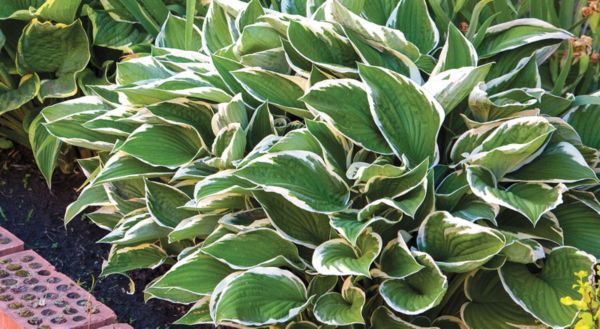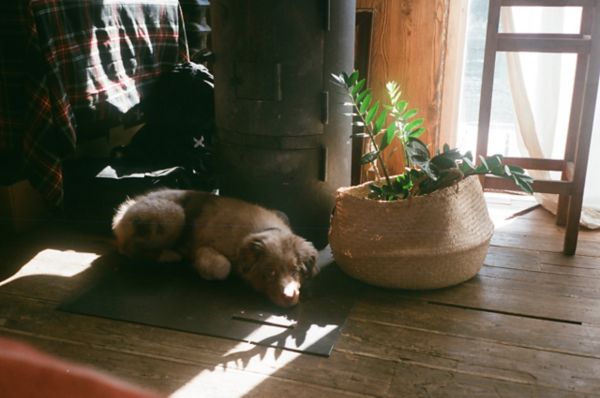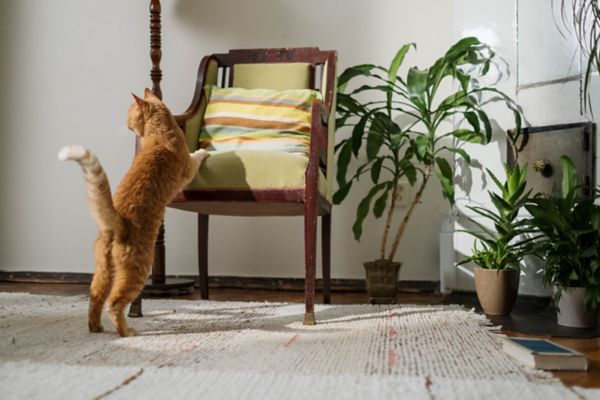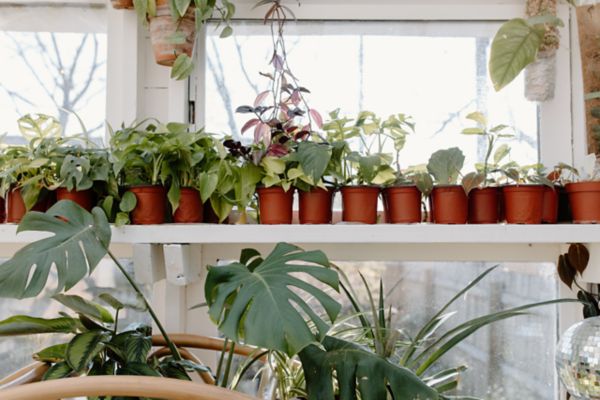How to Grow Crotons
Authored by Leah Chester-Davis
When looking for a pop of bright color and interest, you can’t go wrong with crotons. They lend a tropical feel to rooms and will accent any space.
Crotons show bold, striking foliage in brilliant colors – yellow, pink, bronze, orange, red, purple, green – sometimes all on one plant, which is why they are sometimes called Joseph’s coat.
Crotons are like an eccentric aunt who puts on a wide range of colors with one outfit and carries it off with great aplomb! No doubt about it, this plant is an attention getter. They are exotic year-round, but folks seem to really love them in the fall when they highlight the season’s favorite colors of bright yellow, red, and orange.
About crotons
| Botanical name: | Codiaeum variegatum |
| Common name: | Croton |
| Plant type: | Broadleaf evergreen shrub; grown as houseplant or annual |
| Size: | 2- to 3-feet-tall houseplant; in natural habitat 8 to 10 feet |
| Sun exposure: | Bright, indirect light indoors; full sun outdoors when temperatures warm to 60 degrees or more |
| Soil type: | Fertile, well-drained |
| Soil pH: | 4.5 to 6.5 |
| Hardiness zones: | 11 and 12; elsewhere as houseplants |
| Average first frost: | Varies by region |
| Average last frost: | Varies by region |
| Container friendly: | Yes |
| Beginner friendly: | Yes |
Growing
While these plants grow outside year-round in zones 11 and 12, they make great container plants and annuals to enjoy through the summer and early fall in Zones 10 and below. They pair well with many other plants. Imagine bright yellow, orange, and red foliage in a large container surrounded by bright yellow blooms of lantana, a purple bloomer like angelonia, or the red of pentas. Mix and match and experiment with any of the myriad options. When combining plants in one container, select plants that have the same light, water and fertilizer requirements.
There are several varieties available with a wide range of colors and leaf shapes, from large and bold to narrow and twisted. ‘Petra’ is perhaps the most common with its large, bold leaves veined red, orange, and yellow. Others that are worthy of consideration are ‘Zanzibar’ which has narrow, arching leaves splashed in several colors and looks like an ornamental grass. ‘Oakleaf’ is named for the shape of its lobed leaves. It, too, has striking colors. ‘Mammy’ garners interest with twisting and curling leaves. ‘Superstar’ has bright green leaves splashed in yellow. ‘Andrew’ is green and white.
When combining plants in one container, select plants that have the same light, water, and fertilizer requirements.
Planting
Crotons do best when the soil is fertile and well-drained with a pH of 4.5 to 6.5. The foliage of crotons will be more intense and brilliant with adequate light. When grown as houseplants, they need to be in a location with bright, indirect light. When grown outdoors, they can tolerate full sun to partial shade. In full sun, they benefit from some shade in hot afternoons as the hot sun can cause some fading of colors.
When growing as a houseplant, select a container that has drainage holes and use a potting mix that drains well. Like any houseplant, crotons benefit from being placed outdoors in the warmer months. They do best when temperatures are between 60- and 85-degrees F. When moving outdoors, give them a chance to acclimate by placing in a shaded, protected area for a few days before placing in brighter light. If planting in landscape beds or in outdoor containers, make sure they are in good-draining soil. They can be potted up and taken indoors to overwinter. Bring crotons back inside before temperatures drop below 50 degrees F. Temperatures that are colder can result in them shedding leaves.
Crotons do not like drafts from heating or cooling vents so keep that in mind when giving them a spot in your home.
Water the plant when the top couple of inches of the potting mix starts to feel dry. They don’t like soggy soil, but they don’t need to be dry for long periods either. Water needs during winter will likely lessen. Crotons like humid areas. Indoors, they can benefit by being grouped with other plants, set on a pebble tray or near a humidifier, or placed in an area such as a bathroom or kitchen where the humidity may be higher.
When growing outdoors, they will need about an inch of water per week, and may need to be watered more often, even daily, in outdoor containers. If you see slight wilting of the foliage, give them a drink.
When finding a spot for your croton, keep away from heating and cooling drafts.
Fertilizing
- Heavy fertilization is not needed. Fertilize once or twice during the growing season, typically March to September. Use liquid fertilizer for houseplants and follow label directions. If you wish to see faster growth on the plant, fertilize more often.
Controlling Pests, Diseases, and Other Problems
- Some of the same culprits that may affect other houseplants can be attracted to crotons. Spider mites, mealybugs, and scales are a few. Scan your houseplants on a regular basis for any problems and treat them at once before they have a chance to worsen. Mites can be washed off in a steady stream of water. Mealybugs often show up as white cotton-like spots and scales look like dark, wood-like spots. Swipe them with a cotton swab dipped in rubbing alcohol.
Heavy fertilization is not needed for croton plants.
Expert Tips
- This plant tolerates heat well but doesn’t like cold weather. Unless you live in zones 11 and 12, you will need to overwinter these plants indoors if growing in outside containers or as a landscape plant. Otherwise, consider them as annuals or seasonal plants.
- Crotons are a great choice for fall decorating. Pair them with mums or with ornamental cabbage, kale, pansies, or ornamental peppers. They look great with pumpkins and gourds.
- The foliage is sometimes used in floral arrangements. The plant has a milky sap when the stems or leaves are cut. For some people, the sap is a skin irritant.
Frequently asked questions
When is the best time to repot a croton that looks overgrown in its current container?
The growing season is typically the best time to repot houseplants, anywhere from March to September or when the plant is putting on new growth. Select a container only 1 to 2 inches larger than the current container. Soil in larger containers can hold more water than the plant can take up, which isn’t good for the roots.
Why are my plant’s colorful leaves changing to green?
This likely is because the plant is not receiving enough light. Place it in front of a window with bright, indirect light. Outdoors, it may be receiving too much light and may benefit from some shade.
What could be causing the leaves to drop from my plant?
This could be due to a couple of things, both watering. The plant could be getting too much water or too dry for a long time. Water crotons when the top inch of the soil is dried out. During the winter, houseplants typically need less water. Another reason crotons drop leaves is cool weather. If your plant is cooler than 50 degrees F, this could be a reason for leaf drop. Make sure it is in a spot where it is protected from drafts and severe fluctuations in temperature.





